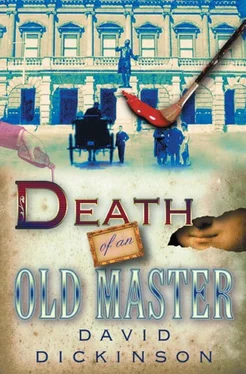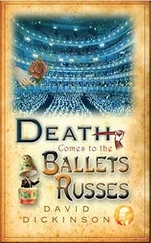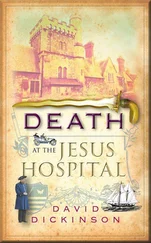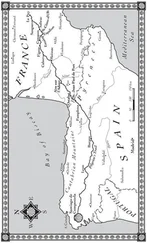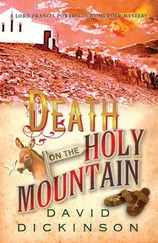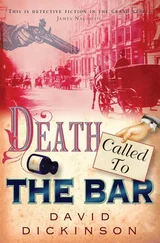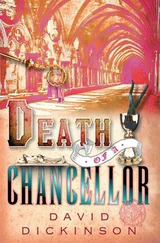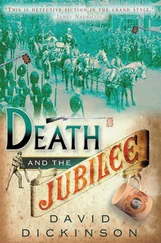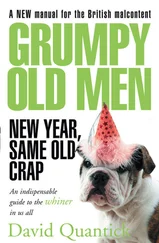David Dickinson - Death of an Old Master
Здесь есть возможность читать онлайн «David Dickinson - Death of an Old Master» весь текст электронной книги совершенно бесплатно (целиком полную версию без сокращений). В некоторых случаях можно слушать аудио, скачать через торрент в формате fb2 и присутствует краткое содержание. Жанр: Исторический детектив, на английском языке. Описание произведения, (предисловие) а так же отзывы посетителей доступны на портале библиотеки ЛибКат.
- Название:Death of an Old Master
- Автор:
- Жанр:
- Год:неизвестен
- ISBN:нет данных
- Рейтинг книги:4 / 5. Голосов: 1
-
Избранное:Добавить в избранное
- Отзывы:
-
Ваша оценка:
- 80
- 1
- 2
- 3
- 4
- 5
Death of an Old Master: краткое содержание, описание и аннотация
Предлагаем к чтению аннотацию, описание, краткое содержание или предисловие (зависит от того, что написал сам автор книги «Death of an Old Master»). Если вы не нашли необходимую информацию о книге — напишите в комментариях, мы постараемся отыскать её.
Death of an Old Master — читать онлайн бесплатно полную книгу (весь текст) целиком
Ниже представлен текст книги, разбитый по страницам. Система сохранения места последней прочитанной страницы, позволяет с удобством читать онлайн бесплатно книгу «Death of an Old Master», без необходимости каждый раз заново искать на чём Вы остановились. Поставьте закладку, и сможете в любой момент перейти на страницу, на которой закончили чтение.
Интервал:
Закладка:
‘I don’t know,’ replied Powerscourt. ‘Garrotting somebody might be more likely to come from an angry husband than an art historian.’
‘I tell you what, Francis,’ said Fitzgerald, ‘I’m going to enlist my auntie in this investigation. She’s got a lot of paintings.’
‘Is that the auntie who keeps the back copies of the Illustrated London News ?’ asked Powerscourt with a smile. He remembered a journey to Venice in search of a Lord Edward Gresham without a photo of his suspect. Fitzgerald had found him at the front of the train seconds before it left and pressed a copy of the Illustrated London News, complete with Gresham photograph, into his hand. Seven years later Powerscourt could still remember the words. ‘She collects all these magazines, my auntie. She’s got rooms full of them. She says they’ll be valuable in the years to come. She’s quite mad. She’s potty . . .’
‘The same auntie, Auntie Winifred,’ said Fitzgerald. He shook his head as he thought of the eccentricities of his relative. ‘She keeps all the paintings in the attic,’ he said. ‘God knows why she doesn’t keep them on the walls like any normal human being. She says they’ll be safer there, the burglars won’t be able to see them.’
Lady Lucy smiled. ‘Is she quite old, your aunt, Johnny?’
‘I think she’s about a hundred and three,’ said Fitzgerald. ‘well, not quite that. But she is undoubtedly very old.’ Fitzgerald finished his glass and peered out into the light fading over Markham Square. ‘We’ve got a bit of a problem here,’ he went on. ‘We don’t know what kind of people they are, these art dealers and art experts. Sir Frederick up at the Royal Academy has offered to help, I know. But if they were army people, or society people or even City people, we’d know what kind of persons we’re dealing with. We don’t with this lot. Don’t you agree, Francis?’
‘I do,’ said Powerscourt. ‘But I’m not sure what good a hundred-and-three-year-old auntie is going to be. She doesn’t have telepathic powers, or anything like that, does she?’
Fitzgerald gazed back to the chessboard, his King lying on its side, a magnificent Mughal crown and sceptre lying in the dust of the battlefield. ‘What’s real? What’s fake? What’s genuine? What’s a forgery? Are these art dealers going to say one is the other? Or the other way round, if you see what I mean? Are they genuine? Or are they fakes too? My auntie has in her collection one genuine twenty-four carat Titian. She has one Leonardo which everybody says is not a Leonardo at all. I think I’ll take the fake Leonardo round the art galleries to see what price it would fetch. That might be very interesting indeed.’
‘Excellent, Johnny, very good.’
‘And what is your next move, Francis?’ asked Lady Lucy, looking carefully at her husband.
‘I am going to Oxford, Lucy. That young man who came here, Thomas Jenkins, I suspect he has been telling me a lot of lies. I am going to the city of dreaming spires and lost causes to find out the truth about the late Christopher Montague.’
William Alaric Piper was waiting for his new American friend William P. McCracken outside the de Courcy and Piper Gallery in Old Bond Street. He looked again at his watch. Ten minutes to go. But then Americans were known for arriving early sometimes. Piper reviewed his courtship of the Boston railroad king. He had secured an introduction by the simple expedient of sitting next to him at breakfast one morning at the Piccadilly Hotel. This manoeuvre was easier to accomplish once some banknotes had been disbursed to the hotel staff. From there it had been a short step to a weekend in a very grand country house near Leatherhead. The house belonged to Piper’s banker, and as the pictures from the de Courcy and Piper Gallery on Lord Anstruther’s walls had not yet been paid for, such invitations, an enormous advantage in the seduction of rich American clients, were easy to obtain.
He had taken McCracken to the National Gallery. They had been greeted warmly by senior members of the gallery staff who had offered to close off any particular sections McCracken and Piper might want to see.
‘We couldn’t possibly let you do that.’ Piper had beamed happily at the recipients of his earlier largesse. ‘We couldn’t keep the ordinary citizens of London from their artistic heritage.’
‘Now, Mr McCracken,’ Piper had said, leading his new friend up the National Gallery steps, ‘I can tell that you are a man of considerable refinement. Your compatriots, as you know, are beginning to buy pictures from Europe in considerable numbers.’ He paused before the entrance to the Italian Old Masters. ‘They are buying the wrong things, Mr McCracken. They buy mediocre works by the Barbizon school, people like Rosa Bonheur and Constant Troyon, the French peasantry transferred to canvas. Can a group of cows sitting about in a field, literally chewing the cud, compare with the works of Leonardo and Raphael? Can a group of peasant girls, carrying strange French produce in baskets on their heads, be compared with the landscapes of a Rubens or a Gainsborough? Art is meant to uplift, to transcend, to make us raise our eyes towards the glory of man and his achievements, not to contemplate the mud on our own boots.’
William P. McCracken nodded sadly. Only the year before he had paid a lot of money for his Troyon. It reminded him of the fields where the McCracken family farmstead had stood on the plains of Iowa before the railroads took him away. Maybe he would have to sell it. Or hide it away in one of the attics.
Piper led him towards a dark Crucifixion by Tintoretto, a suffering Christ surrounded by the two thieves, weeping women in anguish on the ground.
‘Why is it so damned dark?’ said McCracken, peering at the picture. ‘If this Tintoretto guy wanted us to feel sorry for what was going on there why did he paint it so we can hardly see the damned thing? It all looks pretty upsetting, what you can see of it. Not sure Mrs McCracken would want anything so sad in her house, Mr Piper, not sure at all.’
McCracken had admired a group of Venetian portraits hung together on a side wall.
‘Now these,’ he had said to Piper, ‘these are really fine. This red guy, Count whatever he’s called, looks rather like my banker back home in Concord, Massachusetts. And that one over there, Doge Lorenzo is he called? He looks like he was a mighty fine businessman. What do you say to half a million dollars for the four? Would you get a reduction for the bulk buying?’
McCracken was used to obtaining heavy discounts for rails purchased in great quantities. Maybe the same principle should apply for the four pictures.
Piper had explained that none of the paintings in the National Gallery were for sale. He led McCracken to the National Gallery Raphael, the Ansidei Madonna. A grey arch framed the picture. Behind it a flat Italian panorama lay bathed in a gentle sunlight. In the centre, seated on a wooden throne that extended right to the top of the archway, was a Madonna in a red dress with a dark blue cape. Her right hand cradled an infant Christ, her left hand, finger outstretched, pointed to a page of scripture. To her right John the Baptist, better clad, Piper thought, than usual, in a brown tunic and a red wrap, gazed up at the Madonna. On her left the studious figure of St Nicholas of Bari, crook in hand, great cloak fastened with a rich brooch, was consulting the scriptures.
‘Look at it,’ whispered Piper. ‘The colours, the composition, the way the arch frames the whole so perfectly.’ McCracken seemed impressed. ‘Above all,’ Piper whispered on, ‘look at the grace, the restrained beauty, the tranquil expression on the Madonna’s face.
‘And,’ Piper went on, ‘think of this, Mr McCracken. The Ansidei Madonna is one of the most expensive paintings in the world. The National Gallery paid seventy thousand pounds for it less than twenty years ago. Seventy thousand pounds.’
Читать дальшеИнтервал:
Закладка:
Похожие книги на «Death of an Old Master»
Представляем Вашему вниманию похожие книги на «Death of an Old Master» списком для выбора. Мы отобрали схожую по названию и смыслу литературу в надежде предоставить читателям больше вариантов отыскать новые, интересные, ещё непрочитанные произведения.
Обсуждение, отзывы о книге «Death of an Old Master» и просто собственные мнения читателей. Оставьте ваши комментарии, напишите, что Вы думаете о произведении, его смысле или главных героях. Укажите что конкретно понравилось, а что нет, и почему Вы так считаете.
